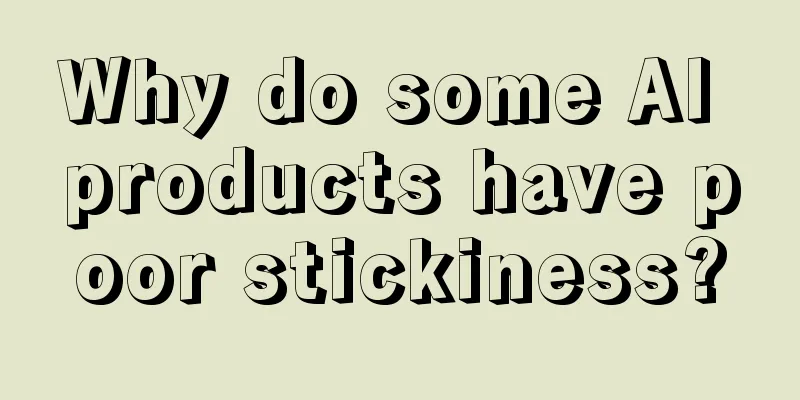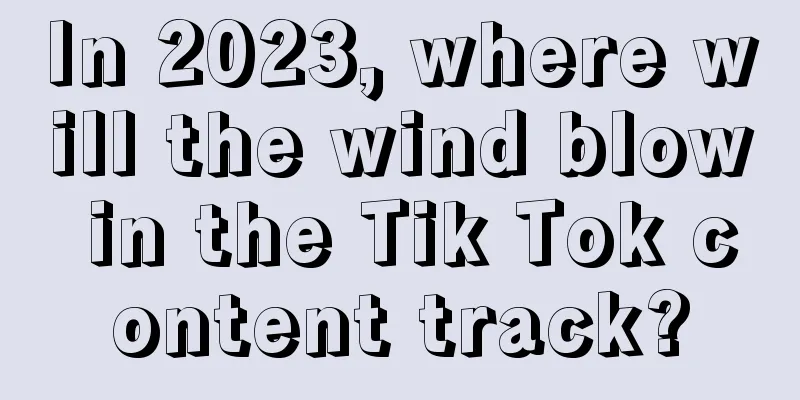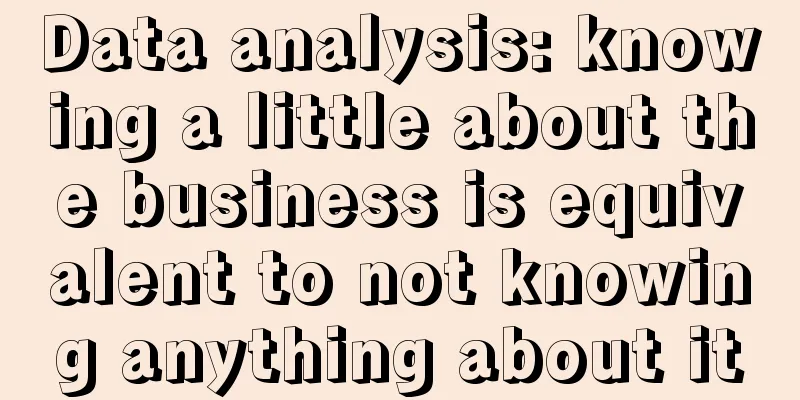Why do some AI products have poor stickiness?

Do you have a feeling: In the past two years, there have been more AI products. Large language model companies no longer boast about how many parameters their models have. Instead, they turn models into applications. After various AI tools appeared, people began to focus on their capabilities in specific scenarios. For example, AI can be used to draw pictures, write articles, search for information, make mind maps, and even modify files. It seems that everyone has started to use AI, and AI has become a part of daily life. However, it wasn’t long before I received messages from friends asking if I had any good drawing software, PPT tools, or language-to-text software? Seeing this, you may wonder, since there are so many AI tools, why do I need to ask others? In fact, many people don’t use their AI tools, or the tools are not really integrated into their workflow. They try the product when it is first released, and then stop using it. Why is this so? I think it’s mainly because of the understanding of the relationship between “expectations, needs, and workflows”. 1. Guess how many AI tools there are this year?I asked several AIs, but none of them gave a definite answer. However, I found some information, which you can check out: Stanford University Artificial Intelligence Institute (Stanford HAI) released a "2024 Artificial Intelligence Index Report". The report said that last year, 51 famous machine learning models were generated. In addition, the report also mentioned that a total of 149 basic models were released in 2023. You may be wondering, in how many applications can these models be used? I asked ChatGPT, and it told me that models like GPT and BERT can theoretically be used in thousands of different applications and tasks. Doubao answered that it could be used in hundreds of different applications and tasks. So, I dare not draw any conclusions. Can you imagine how big the application space is now? However, faced with so many tools, how many of them will you actually download on your computer and remember? Maybe very few, just impression points. Many people have too high expectations for AI, and once they use it and find it not good, they stop using it. Especially for beginners who have just started using AI, they think AI can do things that it cannot do normally. for example: Some people are not very good at writing and expect AI to help them write a perfect article all at once; I myself have had similar misunderstandings. I had to make a PPT for a client before, and I wanted to let AI generate it with one click. I even signed up for a month's membership. Later I found that the effect of AI was not as good as doing it myself. In fact, this is a misunderstanding. AI is more like a "multiplier" that can enhance a person's existing capabilities. If the foundation is zero, then no matter how you amplify it, the result will still be zero. A few days ago, a friend of mine wanted to send gifts to more than 50 customers on Membership Day. The colleague in charge of company operations sorted out the address information of all customers and put it in an Excel spreadsheet. However, when he wanted to send the information to the warehouse for delivery, he encountered a problem. The warehouse has its own professional system, and the format of the information must be changed to the template required by the system. He came to me and asked me to recommend a software. I said that many AIs can do it. Whatever format you need, just let it do it according to the instructions. After I recommended one to him, he spent the whole morning trying to find a suitable solution. Therefore, many people hope to rely entirely on AI to solve problems, expecting to get perfect results without having to do it themselves. In fact, AI is just a tool. It can indeed help us, but the premise is that we must also be prepared. If we only rely on tools at the last minute, we will not get the answers we want. 2. After talking about expectations, let’s talk about needsWhat is demand? If you want something, the process of solving the problem through a certain tool or function is a demand; many people cannot clearly express their needs when facing AI, mainly because they do not understand AI. Don't think this is a simple question. There are three points here: 1. AI technology is new and complex for many users. They don’t know what AI can do or what its limitations are.AI needs us to give it clear, specific, and structured instructions to work correctly, but humans prefer to communicate in a natural, ambiguous way. 2. It will only output madlyYou have to understand that AI cannot create things on its own yet, it processes existing information in a huge knowledge base. Without specific context, AI can only answer based on the meaning of your every sentence. for example: When you are with a friend, you might ask, "Have you eaten today?" Although you did not specify whether it was morning or afternoon, your friend would understand what you meant in that particular context. The question "Have you eaten?" usually gets an expected answer. Obviously, human communication includes non-quantifiable factors such as emotions, contextual dependencies, and personal preferences, which are difficult to convey to AI through simple instructions. AI cannot perceive subtle content, so its predictive ability and accuracy are often limited. Another point: the market limits AI capabilities to a fixed model. What does it mean? For example, tools like KimiChat and Doubao, if you ask them to handle a task, such as uploading a document, generating a mind map, or making a summary, they will only give answers and cannot ask you questions like a person would. But AI search tools are different. When you ask a question, they will ask you a few questions in return. The purpose of doing this is to force you to think more deeply about the problem, which is actually quite effective. A few days ago, a friend complained: He wanted AI to help him write some copywriting. After asking again and again, AI just didn't give a satisfactory answer. He thought AI was too stupid. When I asked him how he asked the question, he said he just said, "Help me write some copywriting, I want to use it in such and such a place." Think about it, when we are working, our leader assigns us a task. If we don’t understand it, we will definitely say, “Leader, can you please say it again in a different way? I don’t understand.” But AI can’t do that. It can only understand the content and then tell it directly. Therefore, if you want AI to write copy in a specific style, the best way is to show AI a few similar examples first and let it learn. After it learns, it can help you generate the content you want. Alternatively, you can instruct the AI to: “I want to write a few copywritings. Can you ask me some questions first, such as what kind of copywriting I want, what is my background information, and where will it be used?”. 3. Reasoning ability deterioratesWhy is this happening? I think AI language reasoning capabilities are actually quite good. Products like Kimi, Doubao, and other products that make long text models can handle conversations between 100,000 and 200,000 words. This means that as long as the conversation does not exceed the word limit, AI can have unlimited rounds of conversations with users. If you think its ability is poor, the key problem may be: you did not express yourself clearly. Think about it, if it says it's good one moment and wrong the next, how can AI figure out what you need? In the end, the conversation becomes a mess. Therefore, to avoid this situation, you must realize from the bottom of your heart that you must try to understand your needs clearly. 3. How to understand the needs?The answer is: through workflow. What is a workflow? The sequence of steps or activities required to complete a task or project. It helps us break down complex tasks into specific step-by-step operations. For example: You are responsible for processing orders in a company. A typical workflow may include: receiving orders, confirming inventory, packing goods, arranging shipment, and sending shipping notifications to customers. Each step has clear instructions and sequences to ensure that the entire order processing process is clear and efficient. The ideal AI that understands your workflow and can help you in the actual operation process is an AI agent. Bill Gates mentioned the AI agent, saying that the AI agent is a super robot that can talk to you and understand the unique needs of your production line. It can not only help you complete tasks automatically, but also personalize the production process according to your business environment, making the entire production line run more efficiently and smoothly. I think this is the key. Why? Many AI products on the market now have the right goal, which is to free up hands and let AI handle tedious tasks. But the method is wrong. Now, if you build an AI agent, it can only talk and can't do anything else. The workflow is horizontal and the goal is vertical. Just like the previous example, from receiving an order to shipping, this is a vertical end goal. What is the process goal? To standardize each step as much as possible, such as what to do first and what to do next after receiving an order. Only by clarifying the steps can we reduce unnecessary troubles. For example: You want AI to help you write a 200,000-word novel. From theme creation, character creation, setting the world view, making an outline, generating the first draft of each chapter, etc., these are all steps. Theme creation and character creation are both horizontal tasks. You need to sort out how to standardize horizontal tasks. After sorting out, you can hand it over to AI to operate according to a fixed process. It is difficult to solve vertical problems at once from the beginning. Obviously, it is difficult to use AI effectively if it is not truly integrated into workflows and business scenarios. Therefore, on the one hand, we need to have a comprehensive and clear understanding of our own workflow, including which tasks are highly repetitive and time-consuming, and which processes can be handed over to AI for processing. Don’t treat AI as your new superhero sidekick, expecting it to solve all problems like Superman, which is unrealistic. But it seems that all AI agents now want to do this. On the other hand, it is crucial to approach problems in a step-by-step, modular way. This is the only way to effectively start leveraging AI, otherwise it is easy to fall back into traditional workflows. Therefore, the frequency of use of AI products is closely related to personal workflow. For AI product companies, they need to think about how to effectively integrate the products into personal workflows; for individuals, they should strive to explore how to develop standardized operating procedures (SOPs) for horizontal work. 4. How do I use AI to implement SOP practices?There are three main aspects: 1. Tool UsageI have always adhered to the principle of "no fuss, heavy tools and light use". Gall's Law says that any complex system that works properly is evolved from a simple system. AI products on the market either have super simple interfaces or have too many functions. My personal choice is to only use its best and most practical functions and integrate this function into my workflow. A few days ago, Baidu released a new product called "Chengpian". After trying it, I found that its "full text correction" function is particularly useful. Therefore, I only use this function. In short, every product has a strongest function, and you only need to use this function to the extreme, that's enough. 2. Task processingI often go out and meet people. Sometimes, during the conversation, my friends will share some business ideas. I would subconsciously ask them: "That's a great speech. Can I record it? I'll send you the text after I've organized it." This way, I can learn a lot; secondly, my friends are also happy that I can help them organize it, so I often use recording software. You may not believe it, but I use the voice memo function on my iPhone. It’s simple, but it’s enough to collect information. When I get back to the office, I hand the recording over to iFLYTEK for processing. This small action brings me tremendous energy. After all, we have many tasks of varying sizes to handle every day. The key is to consider which parts can be handed over to AI. However, I have not yet found a convenient app that can directly convert long audio recordings into text. If there is one, I will definitely be the first to pay for it. Another thing is that I used to record inspirations frequently, and I would quickly write down those sudden ideas in a note-taking software. Now I am wondering, with so many AI products on the market, why is there no note-taking software that can speak directly and immediately convert it into text for saving? In other words, why didn’t note-taking software with AI functions take this user scenario into consideration? This is worth further exploration. 3. Process OptimizationWhen I make a project PPT, there are five steps: first set a framework, prepare content, choose a template, optimize the materials, and finally generate the document. During the whole process, I usually let AI help with the framework part. Sometimes I use Tencent Docs' AI to generate a framework with one click, and sometimes I use other software; around the framework, I will sort out the key knowledge points. This step may require the cooperation of two software to complete. As for templates, there are many ready-made ones in WPS, I will download them directly and then clear out unnecessary content. Finally, when the document is generated, I will upload the template and content to AIPPT-related software, complete it with one click, and then polish it. So, this is my workflow, different tasks require different software and processes to complete. Therefore, I think there are many reasons why AI products have poor stickiness. One of them is that the product has not found its core advantage, which is from the company's perspective; as for the personal perspective, that is: every link of the work must be standardized. V. SummaryExpectations, requirements, and workflow are three things. I hope you can find your own method, put it into practice, and then you can achieve your goals. Author: Wang Zhiyuan Source: WeChat public account: "Wang Zhiyuan (ID: Z201440)" |
Recommend
Does Amazon's third-party payment platform charge fees? What are the rates?
Everyone on Amazon is doing cross-border e-commerc...
6000-word analysis | What is the secret behind the "five female doctors" that became popular amid controversy?
In the future, oral beauty will become the third l...
Who pays for Lazada return shipping? What are the situations?
Some friends want to start cross-border e-commerce...
What is the registration process for Amazon Merchant Manager?
Merchants who want to register Amazon stores have ...
Interpretation of several important updates of Xiaohongshu in recent days
This article provides an in-depth interpretation o...
Can Chinese fruits be sold on Amazon? Is it risky?
Whether it is the Amazon platform or other cross-b...
During the graduation season, BOSS Zhipin made 1.1 billion yuan without any effort.
This article tells that the employment situation i...
Data analysis report, so that the audience will not touch their phones
Many newcomers complain that they don't really...
Changing your name can change your brand's fate
This article uses different brand name change case...
This 618, Taobao and JD.com lean towards consumers
The author of this article talks about how Taobao ...
How did Zara escape the price war?
At a time when fast fashion brands are generally f...
What are the representatives of cross-border e-commerce platforms? How to choose?
More and more merchants are opening stores on cros...
Is eBay a legitimate cross-border e-commerce platform? Does it require a lot of investment?
With the development of the global economy and the...
Brand development principles
Brand means the image of products and quality comm...
Does Shopify need to ship abroad first? Does Shopify ship by itself?
Shopify is an independent website. This platform i...









